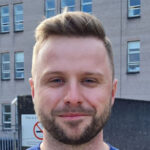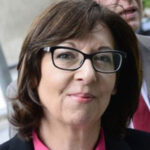The potential for industrial action by NCHDs hovers on the near horizon, but addressing their key concerns may not be straightforward. Catherine Reilly reports.

Chair of the IMO NCHD committee, Dr John Cannon, believes the union’s new campaign on illegal and unsafe working hours, and contract breaches, will resonate with the public.
He said the key message is that having “exhausted” doctors providing care in Irish hospitals is a major patient safety concern.
Public support and understanding will be crucial if the union embarks on industrial action. NCHDs comprise the bulk of the medical workforce. According to the HSE’s Medical Workforce Report 2020-2021, there were 7,442 NCHDs working in the system, including almost 2,600 in non-training posts. This compared with 3,425 consultants employed in the public health service.
On 11 April, the IMO announced it would ballot NCHD members to seek approval for industrial action, up to and including strike action, “in the event that the HSE does not engage meaningfully to resolve the situation and implement much-needed reform.”
The union’s campaign has raised an array of issues. In addition to unsafe working hours, briefing materials have highlighted burnout, mental ill-health, emigration, inability to take annual and educational leave, the structure of training, not being paid for hours worked, and delaying having children for fear of impact on training opportunities.
However, the central concern is illegal and unsafe working hours, Dr Cannon underlined.
“All junior doctors live in fear that they are going to be so exhausted and so tired that they are going to make a serious fatigue-related mistake. None of us want to be working 24 hours, none of us want to be working 80 hours a week. I think if you fix that core issue, then a lot of the other things will not be as acute – they won’t disappear completely, but it will relieve some of the pressure.”
According to an IMO survey, 40 per cent of NCHDs reported routinely working shifts of over 24 hours, 96 per cent routinely worked over 48 hours per week, and all NCHDs reported working beyond their contracted hours. Conversely, HSE data covering July-September 2021 stated 98 per cent compliance with the maximum 24-hour shift and 84 per cent compliance with the 48-hour week in acute hospitals. The union has repeatedly questioned the integrity of the Executive’s data.
Under the hashtag ‘Standingup4NCHDs’, the campaign has gained traction on social media with scores of NCHDs sharing experiences of poor working conditions and unsafe working hours. The potential for strike action has also attracted national media attention.
Speaking to the Medical Independent (MI) on 13 April, Dr Cannon said: “We are hoping to get engagement from the highest levels of the HSE and hopefully from the Department of Health as well, as I think this is a systemic issue that requires engagement and real concrete proposals from the top echelons of the health service.”
Goals
Other than underlining that the current situation must be addressed, the union has not yet publicly set out specific demands.
At an online press conference on 11 April, MI suggested that the issues raised may take time to resolve and queried the union’s initial goals.

IMO CEO Ms Susan Clyne, an experienced operator in the field of industrial relations, responded: “A lot of the issues can actually be sorted quite quickly. It is not a radical request or radical suggestion that everyone is paid for every hour that is worked; it is not a radical suggestion that at the end of your roster you leave the hospital.”
The IMO would expect “really quite quick responses” on some issues, as well as “a proper engagement” and plan agreed with NCHDs.
As to what mechanisms could underpin any progress achieved, Dr Cannon told MI: “Firstly we need to investigate why the numbers are so disparate between what the HSE is reporting and junior doctors are reporting. Because I think those numbers have to be reliable and you have to stand over them for the current system to work.” There was also an “archaic system of doctors submitting their hours on paper slips, which I think is almost unthinkable in the digital age we are in”, he noted.
However, Dr Cannon underlined that the overarching problem was that medical manpower units “are trying to cover 100 per cent of the roster with 50 per cent of the staff”.
Consultants
A pivotal part of addressing the hospital waiting list crisis is cultivating the current crop of NCHDs and retaining them as consultants, continued Dr Cannon.
“That is how we increase consultant numbers. And ultimately then, when we have done that, we can start changing the model. The model at the moment is a consultant supervised service, with a ratio of two junior doctors to every consultant. We need to flip that completely to a consultant-led service where we have two consultants for every junior doctor. And that won’t happen unless we bring through this crop of junior doctors and treat them well, and to do that, we need to significantly increase our junior doctor workforce because there is not a medical manpower unit in the country who could make an EWTD- [European Working Time Directive] compliant roster at the moment.”
Increasing NCHD numbers without significantly widening the NCHD-consultant ratio would seem a delicate process, MI suggested.
Dr Cannon said that for a time “NCHD numbers would need to expand, to allow us to increase consultant numbers in turn. However, a true ‘consultant-led’ service (if realised), would then unburden the NCHD group, and NCHD numbers could contract again. However, at the moment there is no hope for either NCHDs or the consultant crisis unless we increase the numbers of NCHDs and increase the proportion of those NCHDs who are in training.”
He said consultants have been supportive of the campaign. “I think there has been an unbelievable level of support from the consultant workforce for this campaign.”
As acknowledged by the NCHD Chair, there are fundamental problems that need to be addressed to improve working conditions for NCHDS, some of which are independent of the NCHD workforce itself.
MI asked what process the IMO had in mind, in terms of negotiating through those issues with the HSE and Government.
Dr Cannon said that, firstly, the union’s ballot needed to run its course and a mandate provided. The IMO would then consider its next steps.
“We will be guided by our members,” he told MI. “But doctors in Ireland, junior doctors and consultants, are incredibly selfless in my opinion, junior doctors shelved this discontent, which was really bubbling to the surface in 2019… we shelved it during the pandemic and put our shoulders to the wheel.…”
He said NCHDs would not strike except in the “most extreme circumstances, like we have now, with the flagrant breach of our contract and our illegal working hours”.
“I think we will be reasonable in terms of how we go about this,” added Dr Cannon, who noted that significantly bolstering the NCHD workforce cannot happen instantaneously. “But we do produce the most amount of medical graduates in the EU per 100,000 population; we are a net exporter of graduates and we train them to an incredibly high standard as well.”
2013 action
It is easy to overlook the progress made following the IMO’s ‘24 No More’ campaign and one-day national strike in 2013. At the time, shifts over 24 hours and working weeks over 100 hours were much more widespread. The HSE hired extra NCHDs (a significant proportion in non-training roles), a system of financial sanctions was instigated for hospitals breaching the maximum 24-hour shift, and a national verification and implementation group was established. However, progress stalled after a number of years.
Former IMO President Dr John Duddy, a Fellow in paediatric neurosurgery at Alder Hey Children’s Hospital in Liverpool, was involved in the 2013 campaign. He said the changes introduced “revolutionised” his life at the time. “I think for people who had been in the system up to that point, it really changed our lives,” he said.
“I was doing 36-hour shifts as a neurosurgery registrar in Beaumont, anything from one-to-four times in a week, and after that campaign, that changed to doing 12-hour night shifts once every six-to-eight weeks. That revolutionised things for me and for thousands of NCHDs like me. That institutional memory of that time [among current NCHDs] has passed on, which is a great thing.” He noted, however, that the issue of illegal and unsafe working hours continues to be a reality for NCHDs.
From 2013 to 2016, there was a system-wide focus on improving conditions for NCHDs. However, “I think we have gone back to where we were, in terms of seeing NCHDs as a disposable part of the system.”
After the 2013 action, many positive changes were driven by Lead NCHDs who were introduced under the agreement between the IMO and health service management. “Maybe the impetus behind the NCHD Lead programme has been lost a little bit,” commented Dr Duddy, “I think [the role] has kind of been corporatised by the HSE.”
Dr Duddy said the measures agreed between the IMO and health service management, such as financial sanctions and the implementation and verification process, worked well for a time.
“Particularly the implementation process, when you had initially Ian Carter as head of the acute hospitals division and then subsequently Angela Fitzgerald and Liam Woods coming around, holding CEOs and HR managers to task for not implementing the changes they said they would do….
“I saw over the years how the rigidity in which the HSE implemented that, and how hard they came down on the hospitals, dissipated over time as well. Initially again the financial incentive was there for hospitals to do it… and I think they have probably factored those costs into their budgets now, so it is not as big a deal for them now to take a fine for not being EWTD compliant.”
Currently working in a large well-run teaching hospital in the NHS, Dr Duddy’s working hours are much better compared with a similar position in Ireland, due to the increased level of staffing. Most days, he can leave on time at five o’clock.
While there are some areas where NCHDs in Ireland have comparatively better entitlements – on paper at least – Dr Duddy cannot emphasise enough “how much better life is in the UK when you know you will generally finish work at the scheduled time. I would take that over enhanced pay or leave any day”.
Dr Duddy believes that the primary source of the problems for NCHDs is the system of rotation around the country.
If this momentum can be regained and change follows, the campaign could be considered successful
“Because they are employed on temporary contracts for three-to-six months, most hospitals treat them as the temporary, disposable employees that they are. If a US-style residency programme was introduced, or at the very least regionalised training programmes, they would be employed by the same place for four-to-eight years, depending on the specialty. As a result, they would have to be treated with respect by their employer and all staff around the hospital.
“The issues around emergency tax, incorrect pay scales, different IT systems, etc, would be immediately resolved. If groups of NCHDs work together in one location for longer periods, they will be able to better organise themselves and challenge the other unacceptable employer practices, such as non-payment of overtime and access to leave. The NCHD cohort would be greatly strengthened as a result.”
There would likely be a need for national rotation for certain specialties like neurosurgery or cardiothoracic surgery, or short six-to-12-month rotations for specialist exposure in particular areas, but this should be the exception rather than the norm, he outlined.
Dr Duddy observed that resolving the current issues affecting NCHDs will require “major structural changes” involving not only the HSE and Department of Health, but also the training bodies.
He added: “In some ways, my own philosophy is the answer to NCHDs’ working hours is not to hire more NCHDs, it is to hire more consultants, and it is to hire more support staff, and I am a big believer in physician associates (PAs) in particular – I think the Irish system should be flooded with PAs to pick up a lot of the work that particularly interns and SHOs do. And ANPs [advanced nurse practitioners] have a very important role to play as well…. The ANP role in Ireland is very under-used compared to over here.”
He continued: “Given that these suggestions, along with the need to increase consultant numbers and support staff, such as ANPs and PAs, do not directly involve NCHDs, it remains to be seen if a NCHD-focused industrial relations campaign will address them. However, such a campaign may succeed in forcing the system to re-engage with NCHD issues as the 2013 campaign did, albeit for a two-to-three-year period.
Training bodies
Mr Ken Mealy, Chair of the Forum of Irish Postgraduate Medical Training Bodies, told MI greater regionalisation is being explored by the training bodies.
“We all understand moving house every year is a disaster, even independently of ease of getting accommodation. Just the costs of all of that and the inconvenience…. There are limitations [in progressing regionalisation], but for the generality of lots of medicine and surgery, I think there is an understanding by the training bodies that these are issues they need to seriously do their best to address in the coming years.”
Mr Mealy, a Consultant General Surgeon, said “there has been a modest increase in trainee numbers over the last number of years. Whether that can be expanded to any greater extent or not, I do not know.” Barriers included the extent of further training opportunities in craft specialties as well as funding for training expansion.
Increasing the training numbers would also require more consultant trainers. “But there are just so many moving parts here. If you cannot appoint permanent consultants into some hospitals, then it is very hard to have trainees in those hospitals.”
Is the issue of 24-plus hour shifts being discussed with the HSE?
“If you talk to the HSE they will tell you that hospitals are 98 per cent compliant, but of course if you talk to many doctors, they will say that is at odds with what they are experiencing. Is it reported accurately? I don’t know… I think one of the biggest issues is the level of staffing, so if somebody is sick or somebody is on holiday there is no cover for them… so that whoever is left has to fill those posts. So really what you would be saying is instead of having 20 SHOs and registrars in a hospital you should have 25 so that the work/ life balance is better, people get off earlier, they don’t have the same sort of rosters.
“But the problem there is, you are talking about expanding the NCHD numbers again. This brings us back to configuration of the health service where you have many 24/7 acute rosters that have to be staffed in units around the country when, if there was consolidation of the health service, you would not need as many acute rosters. But that is a political issue.”
According to Mr Mealy, the Forum has meetings with National Doctors Training and Planning (NDTP) and the Medical Council, where working conditions are raised. He believed there was also “great variation” in treatment of NCHDs across hospitals.
“We are not the employer, but these are the conversations we have with the HSE.…The big picture we all dance around, as I say, is the configuration of the health service. NDTP and [its Medical Director] Brian Kinirons have no control over how many acute rosters are in the country and likewise the Medical Council doesn’t either. Having said that, I have voiced these concerns [on configuration] at so many meetings….”
Official response
A Department spokesperson told MI on 14 April: “The Minister met with NCHDs last week with regard to a number of concerns they had raised. This group perform a very significant role in our public health system, not least through the last two years. The Department are following up on the issues raised by the NCHDs at present and will be engaging further in the coming weeks.”
However, it is understood the Minister’s meeting was with Lead NCHDs.
Asked to clarify whether there was an intention to meet IMO NCHDs, the spokesperson said: “We have nothing further to add to our response for the moment.”
The HSE had not commented by press time.












Leave a Reply
You must be logged in to post a comment.